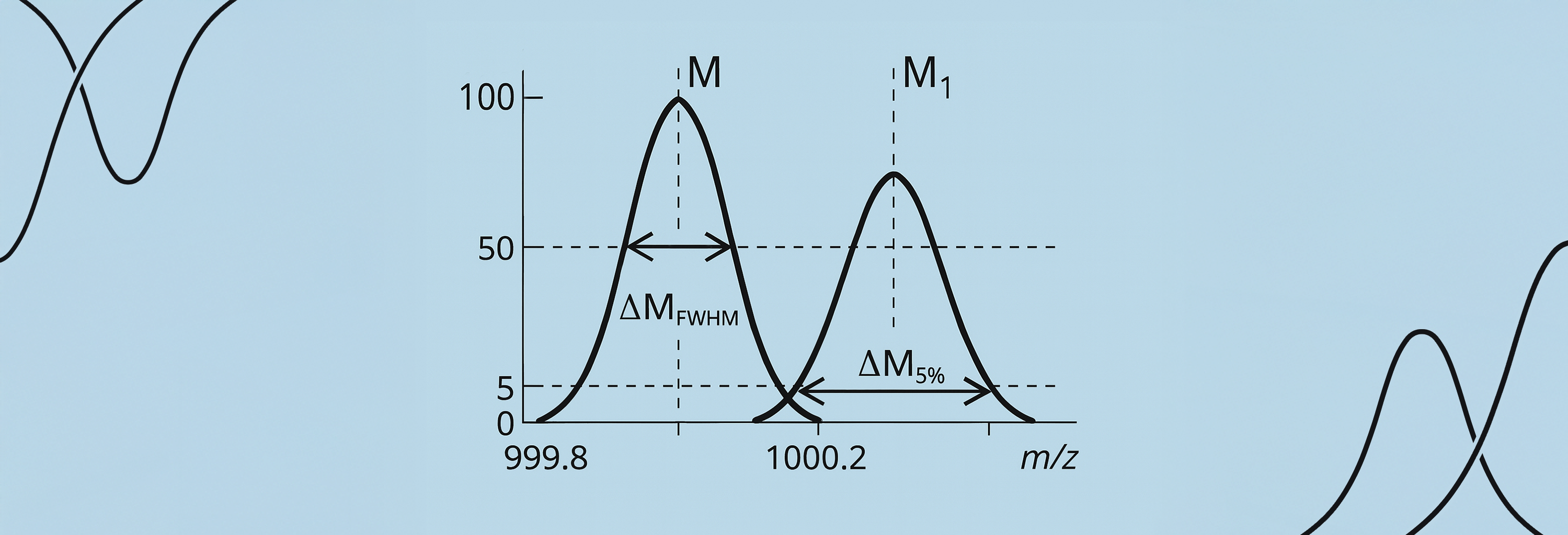In mass spectrometry, mass resolution and resolving power, fundamental characteristics to determining an instrument's capabilities, unfortunately often mistaken for one another. But understanding the nuances of these terms is essential to making the best choice for specific analytical needs.
Both refer to distinct properties that impact the instrument's ability to differentiate between ions with similar mass-to-charge (m/z) ratios. So what's the difference?
First of all, here are the definitions:
Mass Resolution in mass spectrometry refers to the instrument's capacity to distinguish between two closely spaced ions. Specifically, it is a measure of the smallest difference in m/z between two ions that the instrument can separate as distinct peaks in the spectrum. This is typically defined by the separation between two peaks at a particular fraction of their peak heights, often at 5%, 10%, or 50% of the peak height, depending on the definition being used (full width at half maximum (FWHM) is a common measure).
For example, if two ions have m/z values of 100.0 and 100.1, the resolution required to differentiate between these peaks would need to be high enough to prevent their signals from overlapping significantly. The ability to resolve these peaks determines how well the instrument can separate ions of slightly different masses, which is especially important in complex samples containing multiple compounds.
Mass Resolving Power in mass spectrometry, on the other hand, is a quantitative measure of an instrument’s capability to achieve a specified resolution. Resolving power is defined as the m/z of a peak divided by the width of the peak at a particular height (often FWHM). Thus, the resolving power R can be expressed as:
R=(m/z)/Δm
where Δm is the peak width at the defined height.
A higher resolving power value indicates a better ability to differentiate between ions of similar m/z ratios. For instance, a mass spectrometer with a resolving power of 100,000 is better suited for distinguishing between ions with m/z values that differ by very small amounts compared to an instrument with a lower resolving power.
While resolution and resolving power are related, their key differences lie in their definitions, calculations, and implications for instrument performance.
Resolution is a qualitative measure, indicating the capability of the instrument to distinguish between two peaks. It’s an absolute value and does not depend on the m/z ratio of the ions being measured.
Resolving Power is a quantitative parameter that describes how narrow a peak can be relative to its m/z value. As such, it is often expressed as a ratio, and its value can vary depending on the m/z being measured. A high resolving power indicates a high ability to separate ions closely spaced in m/z but requires specific conditions to achieve, such as high-quality ion optics and precise calibration.
In practical terms, resolution is what the operator observes as distinct peaks in a spectrum, while resolving power is the capability of the instrument to generate that resolution.

